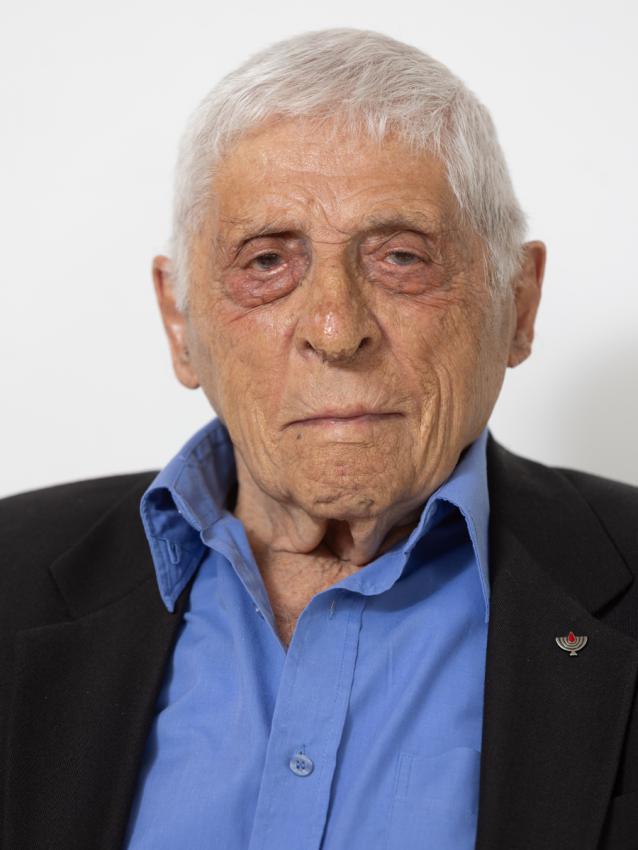Arie Eitani was born Armin Guttman in Milan, Italy in 1927, the only child of Hungarian immigrants Samuel and Etel. Arie has happy memories of his childhood and recalls feeling very much a part of Italian society.
On the eve of World War II, Jews with foreign citizenship were forced to leave Italy. The family returned to Hungary and settled in the city of Eger. Arie was sent to heder (Jewish elementary school), where he learned Hebrew, laid tefillin (phylacteries), was called up to the Torah, and celebrated his Bar Mitzva. When he was a little older, he attended a state school.
In 1942, Samuel was conscripted to the Hungarian Jewish Labor Service. In May 1944, Arie together with his mother Etel, his grandfather, and the rest of his family were incarcerated in the Eger ghetto. Approximately one month later, they were deported to Auschwitz, and the entire family except for Arie was murdered in the gas chambers. Arie was imprisoned in the Gypsy camp at Auschwitz and then transferred to the Kaufering camp, where he was a forced laborer. He had to drag sacks of cement and corpses, and he witnessed suicides, murders, and the throwing of prisoners’ bodies into an enormous pit.
Recalling one of the selections, Arie relates:
"We were forced to run naked in front of the SS officers. I didn’t pass [the selection]! I don’t know where I mustered the courage, but I took advantage of a split-second when no one was paying attention and crawled under the cattle cars. I got dressed quickly and joined the prisoners who had been found fit for work."
When Kaufering was evacuated, the inmates were sent on a death march. “Anyone who lagged behind, stumbled, fell, or moved out of formation was beaten or shot to death.” Arie reached the Allach camp, where he contracted typhus and became a Muselmann, a living skeleton. He was sent to a barracks from which the corpses were collected and disposed of in a pit each morning.
When US Army soldiers liberated the camp, Arie was too weak to stand up. “I crawled around and made do with remnants of food strewn on the ground.”
Arie returned to Eger and boarded the Ma’apilim (illegal immigrants) vessel Knesset Israel in November 1946. However, the British intercepted the boat and imprisoned its passengers in Cyprus. There, the camp fence triggered traumatic Holocaust memories for Arie. He ran away but was caught, put on trial, and sent to jail. “Once again I wore a prisoner’s uniform, and once more I was not free.”
Arie finally reached Eretz Israel (Mandatory Palestine) in 1947. He enlisted in the Haganah and fought in the War of Independence, including in Mishmar Hayarden, which was attacked by the Syrians in June 1948.
"I was worried that my friends would mock me, a Diaspora Jew who was still on the run, like in the Holocaust. My friend Avraham Kasten and I decided that we would detonate the last grenade when the Syrians arrived. In those moments, my entire life flashed before my eyes. We could hear the cries of the approaching Syrians in the background. Suddenly, there was an explosion."
Arie was badly injured and was taken hostage. He was tortured, and some of his toes were amputated. He returned to Israel thirteen months later.
Arie is one of the founders of Kibbutz Ha'on in northern Israel. There, he met and married Rina, a Holocaust survivor from Poland.
Rina z”l and Arie have two children, eight grandchildren, and seven great-grandchildren. Rina passed away in 2020. Their first-born daughter Esther passed away in 2023.


